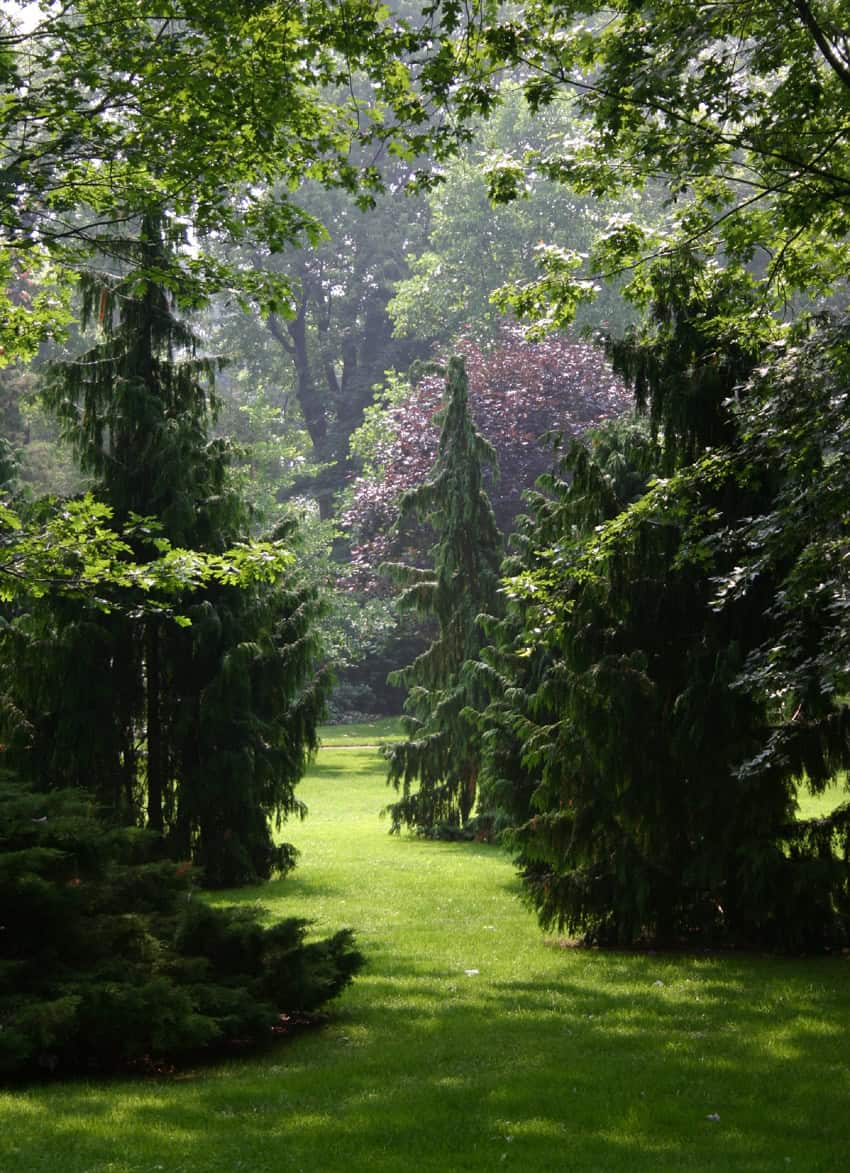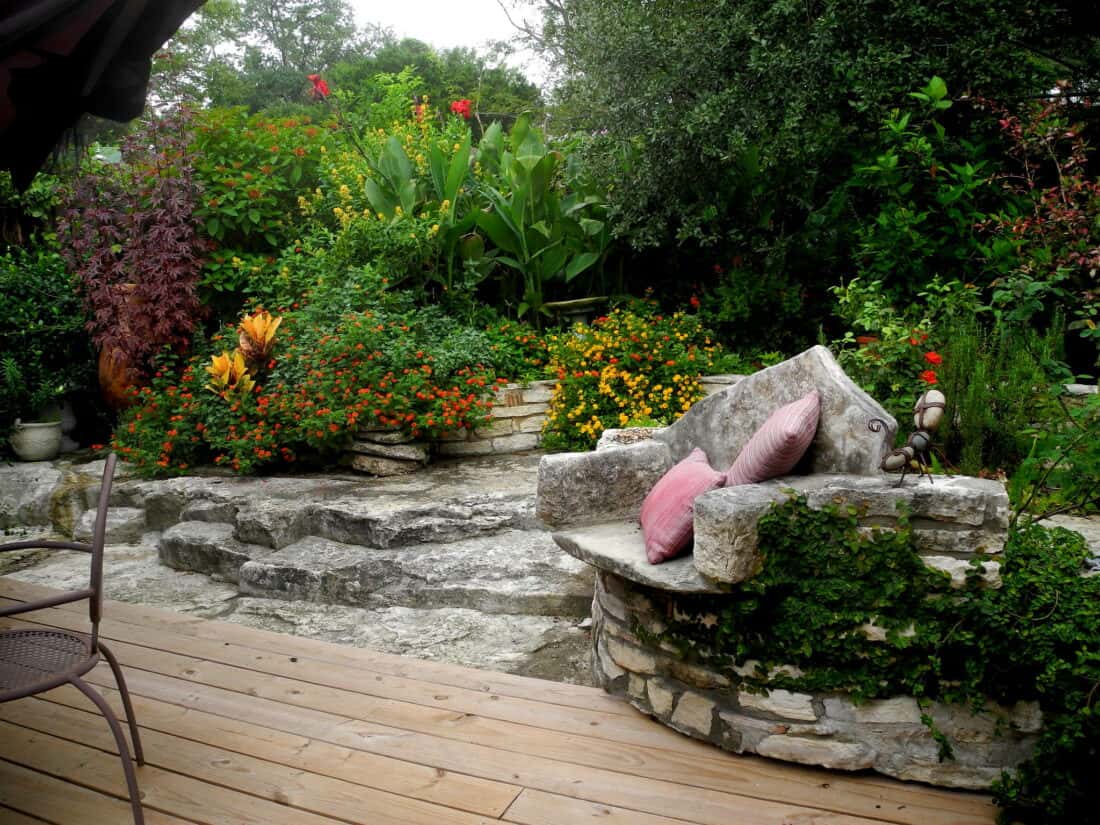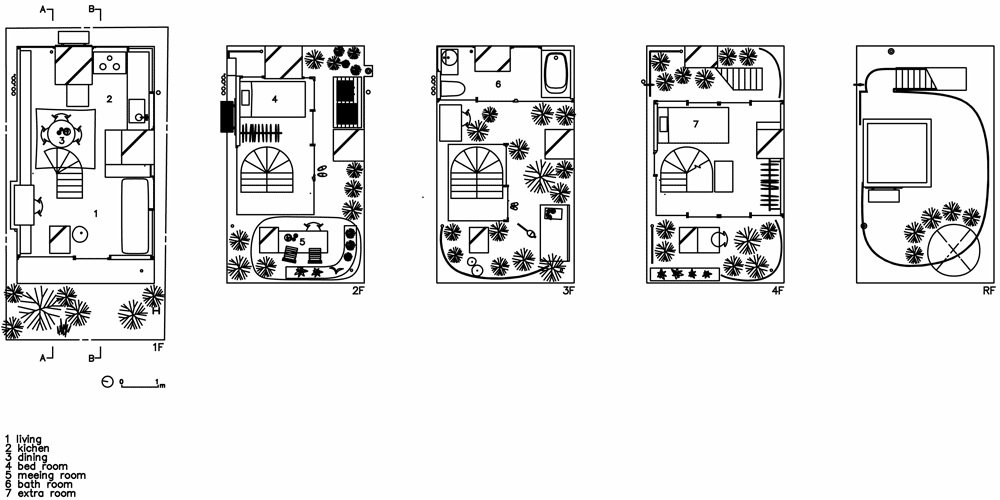Do you wish your garden was less boring and a lot more exciting? But you aren’t really sure how to fix it? Knowing how to effectively design garden layout is not obvious and getting it right will ensure that every other decision you make in your garden will be more successful.
Let’s see if maybe I can get you unstuck.
How to see your garden’s opportunities
One of the biggest hurdles that everyone has with designing a garden is imagining the space differently than it currently is. It is, quite simply, very hard to imagine something else when reality is staring you right in the face.
And reality is something very different than what you probably hope for.
Because of this, most people tend to build their designs off the shape of their plot. They line the edges with planter beds and fill the middle with grass. The property lines dominate the design decisions.
But this often does not get the best results because property lines were never intended to be the basis of great garden design.
Let me repeat that for dramatic effect – THE PROPERTY LINES WERE NEVER INTENDED TO BE THE BASIS OF A GREAT GARDEN DESIGN! 🤯
Seriously, the people who do community planning, urban planning, and who figure out the shapes of the land parcels we build our houses on NEVER think about what kind of gardens we might make in that shape.
Here Are My Four Most Important Tips on How to Design a Garden layout:

How do you combat the natural tendency to follow the property lines?
Tip #1 – Don’t follow the property lines
Don’t follow the property lines – in fact -IGNORE THEM! All they are is the way that some civil engineers chose to break up the land that you live on so that houses could be built. Designing with them is giving them way too much power.
When we are in our gardens, we crave the feeling of being in a garden – fully engrossed in nature. This means we need to bring edges in and define the outdoor areas that we want to live in, to our own scale and our needs (not to the civil engineer’s scale! – they work on big spaces, and big will not get you to a cozy and comfortable backyard.)

Tip #2 – The best way to start a garden plan is to first get out a piece of paper.
Drawing a plan on paper (vs out in the yard) helps you detach a bit from the reality of the actual place and lets your mind start to open up to more creative ideas.
Paper and pencil helps you explore more ideas. Always draw, the act of putting pencil to paper will activate different parts of your mind and your creativity – so not only will you have a more thoughtful and considered plan – but you will generate ideas, through drawing, that you would not have otherwise.

Tip #3 – How to design a garden layout? Start in the middle
Those property lines are on the edge – making you think too much about them. They are distracting – pulling you away from the heart of your garden. So defy them by starting in the middle of your garden.
Play with simple shapes in the middle of the garden. Literally, start by drawing a square, circle, rectangle or oval in the middle of your yard. Play around with it and find a pleasing combination of shapes. Try overlapping them, connecting them, and imagining them to be different things (maybe that square is a lawn, maybe it is a deck, or maybe it is a pond?).
Use the shapes to figure out how things (i.e., areas of your garden) flow and work together.
THEN – and only then, (after you have something that feels nice and flows well)… can you fill in the edges with plants.
Because the truth is, garden beds on the outer edges of your plot can be any shape and depth and once they are filled with beautiful plants, they can hide a million odd angles and property line quirks.
Working from the middle, out (rather than from the edges, in) – also gives you a chance to create pleasing symmetry; it might also help you to find a different balance, and it frees you to create any layout you might want.
And my last tip…


Tip #4: If you’re having trouble coming up with a design, try placing a big circle in your plan.
Even if you don’t want a big circle of turf or a circular path or some other circle shaped feature – starting with a circle will help you get unstuck and start to see the possibilities.
After you play with it, you can always stretch it out to an oval, or you can square it off to be a rectangle.
Why are circles a clever design trick? Circles are good at getting you unstuck because they aren’t what we expect to see.
I’ve never seen a property line that is a circle, have you? – Yeah, I thought not.
(ok, ok, there is that one Dutch Design community where a handful of people live… but let’s put that aside)
But we have all seen plenty of beautiful gardens with circular features, right?
Try it out and see what happens when you play with a circle or two – and while you’re at it, toss in a rectangle or a square. Let them overlap. Make them bigger and smaller – play, and let your mind get creative.
Finding simple ways to effectively plan, define and break up space in your garden is one of many topics I teach, and helping to solve problems in your garden is my speciality. I even teach courses about it!
If there is something else you are struggling with – let me know. I probably have a post about it – and If not, I’ll write one!
xo-
Rochelle
p.s. Want some help with finding shapes for your garden and then taking the next step to translate these shapes into a legit plan for your landscape? The Garden Design Lab is my signature course where I show you exactly how to start from scratch (I.e. a crappy yard) and transform your garden into something amazing. And if that course is more than you need – Planting Design Boot Camp might be a better fit (it’s just the plant-y part – but we use shapes to design there too).
I’d love to help you.
+comments+